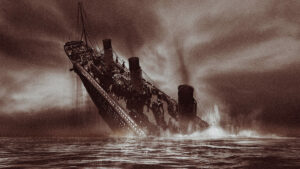Tim Treadgold: Nickel marches higher, the sector remains a buy (for now!)

Pic: John W Banagan / Stone via Getty Images
Buy the sector was good advice from Stockhead two weeks ago when it looked like the nickel price was poised for take-off as Indonesia mulled a ban on exports of low-grade ore.
And it could still be good advice because nickel might have further to run.
In the two weeks since that August 23 story (Nickel on the move – ‘buy the sector’) the price of the metal, which is used to make stainless steel and rechargeable batteries, has risen by 17.5 per cent from $US7.12 ($10.45) a pound to $US8.38/lb.
ASX-listed nickel miners have followed the metal with the entire sector up, some stocks quite substantially, such as Western Areas (ASX:WSA), which has risen by 20 per cent to $3, and Mincor Resources (ASX:MCR) which is 19 per cent higher at 68c.
Events in Indonesia are the sole cause of the mini nickel boom and that could be reason to not plunge too deeply into nickel stocks given the track record of politicians in that country back-tracking on policies.
Back in 2014 a similar ban was applied on exports of low-grade nickel ore as a way of encouraging investment in value-added mineral processing, only to be withdrawn three years later.
This time it could be different, though whenever an investor hears a comment like that, he knows it’s time to take cover for the simple reason that it never is different.
What is known is that Indonesian mines minister Ignasius Jonan said in a series of media interviews that the re-introduction of the ban planned for 2022 would be brought forward to the end of this year.
But even that does not appear to be the full story, because on Monday the director general of mining, Bambang Gatot Ariyono, said the ban would go much further and exports of nickel ore of any quality would be banned, not just low-grade material.
The importance of Indonesia as a source of nickel can be gauged by the price response so far, though what investors want to know is whether prices can move higher in an economic climate that is far from encouraging for most commodities.
Keeping a weather-eye on what happens in the China v US trade war will be as important as watching the next phase of the Indonesian nickel export ban because it is possible that the bad news could cancel out the good.
Opinions on what happens next with nickel are divided.
On the positive side there are investment banks such as Goldman Sachs and BMO Capital Markets which see another leg up for the nickel price, perhaps as high as $US10/lb if only because of the uncertainty factor associated with Indonesian politics.
Colin Hamilton, managing director for commodities at Canadian-based BMO, told London’s Financial Times newspaper that the Indonesian export ban cut off a major source of raw material for China’s nickel pig iron (NPI) industry, leaving a hole of around 100,000 tonnes a year in the nickel market.
Goldman Sachs analysts said the ban was part of Indonesia’s drive to develop an electric vehicle industry based on domestic supplies of nickel and cobalt, a move which would force other users of the metals to seek alternative supplies.
Not everyone is convinced that the nickel price can continue rising, a view which rings a warning bell about Australian nickel miners already being fully valued.
Credit Suisse, another investment bank, believes the nickel price will stay above $US8/lb for the rest of the year: “but as occurred last time, reality will be less exciting”.
Next year, according to Credit Suisse, the nickel price is likely to slip back to $US7/lb, and then down to $US6.50/lb in 2021 as Indonesian nickel reaches the market in the form of semi-processed NPI.
That view of the nickel price surging before retreating is reflected in a particularly cautious investment view of Credit Suisse about some of the leading Australian nickel miners.
Western Areas, for example, is said to have a target share price over the next 12-months of $2.50, down 50c on its latest sales.
Independence Group (ASX:IGO) could fall even further with Credit Suisse having a sell on the stock and a price target of $4.15 – a whopping $1.97 (32 per cent) less than last sales at $6.12.
That warning from Credit Suisse is a reminder that metal markets tend to overreact on the upside (and the downside) when there’s a change in fundamental supply and demand.
What’s happening right now is that there’s a rush underway to get exposure to nickel by investors and by consumers of the metal, and there’s every chance that the rush will last until the end of the year, long enough to keep nickel as a sector to buy.
But, if that’s the good news then it is also worth remembering the economic storm being whipped up by the China v US trade war, with a potential European recession to come after Brexit (if it happens).
For now, it remains a case of buy the sector but watch out for an over-reaction on the upside, and bad economic news which could rub the gloss off nickel.
UNLOCK INSIGHTS
Discover the untold stories of emerging ASX stocks.
Daily news and expert analysis, it's free to subscribe.
By proceeding, you confirm you understand that we handle personal information in accordance with our Privacy Policy.








